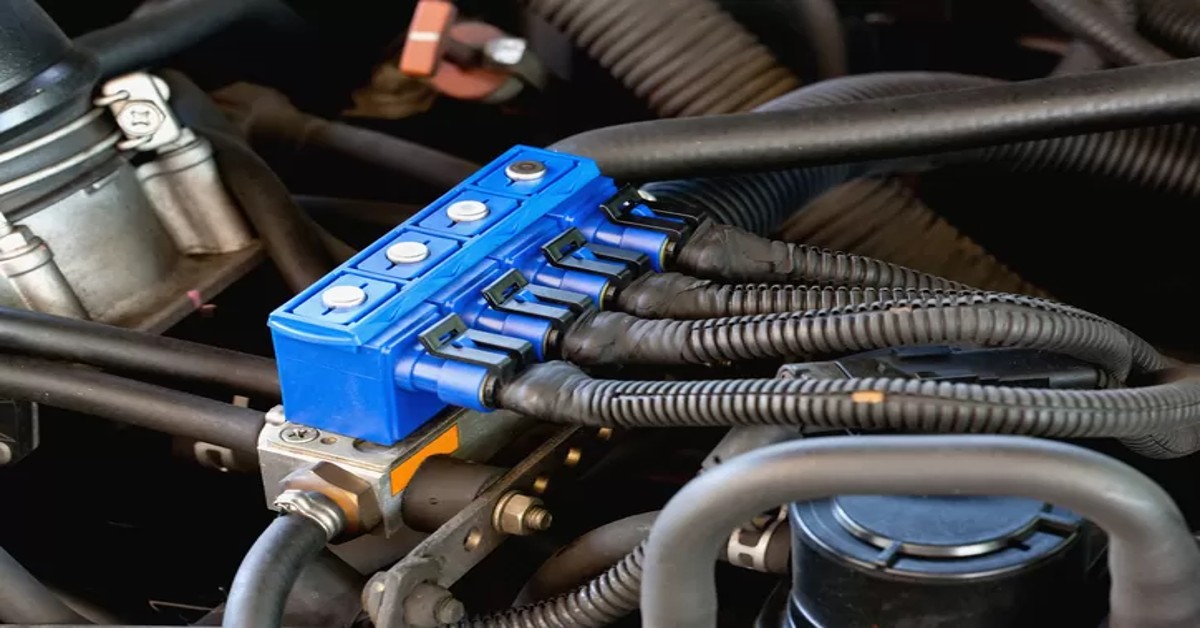You don’t have to be an expert in cars to diagnose a no-start condition.
Generally speaking, most people choose to seek professional help for any issue that their car may throw at them before attempting to fix it themselves.
Granted, not all issues can be self-diagnosed and for a few, professional help is likely more suitable. But sometimes even the most seemingly daunting problems can be worth a try. One such is the classic “crank but no start condition”. The car just seems like it would turn over but then goes on and on cranking…
It is quite a puzzling case because you don’t know where to start or which piece to look at first.
For a combustion reaction to take place, an engine essentially needs five things; Fuel, Air, Spark, Compression, and Timing. As the process begins, fuel and oxygen atomized rush into the chamber through the intake as the valve shuts close. Then the piston compresses the mixture, squeezing together every last molecule when it’s violently forced down by the ignition system. And all that takes place with a mechanism that is timed with precision.
So in order to diagnose a crank but no start condition, we need to make sure the engine has all of those things working correctly for it.
But instead of giving you analysis paralysis by listing all of the different factors in a randomized fashion, we’ll discuss every aspect and check off the causes in a systematized way so you can have your car running back again like a pro.
Complete Diagnosis For Car Cranks But Doesn’t Start
To diagnose the issue preventing your car from turning over, we’ll go over, the fuel system, ignition system, air intake, compression, and finally the timing of it all.
Table of Contents
Fuel
A sufficient and consistent flow of fuel is vital in generating power for the engine. Without enough fuel going into the cylinders at the time of ignition, the engine will struggle to produce enough power to turn over.
A simple and quick way to check whether it is a restriction in fuel that is preventing the start is by using starting fluid. You can simply spray the fluid either in the air intake or in the air filter and try to start the car. If the vehicle runs for a moment and shuts back down you could confirm there is a problem with fuel delivery. However, this may not be able to find which component in the fuel system is causing the problem in intake.
Bad Fuel Pump
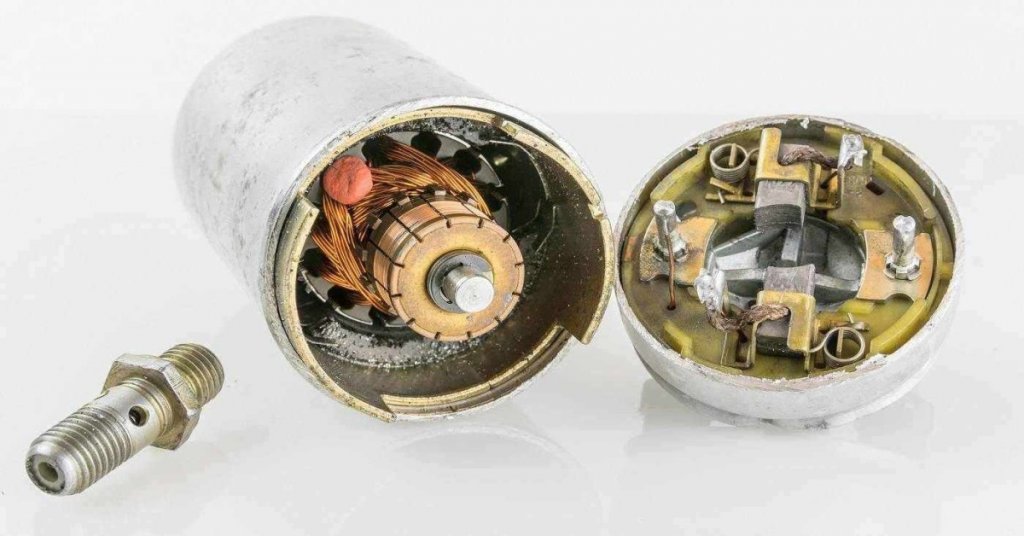
A weak pump is one of the most common and biggest culprits for starting issues. The basic way fuel travels through the rail into the system is by pressure. The electric motor inside the fuel pump rotates to generate pressure and send a stream of fuel up to the rail. The fuel has to go through the filter into the fuel rail where it can be injected into the cylinders.
A fuel pump that fails to prime or cannot create sufficient pressure will not be able to send an adequate and consistent stream of fuel to the engine, causing a lack of fuel pressure. The engine may cranks because the starter is engaging but will fail to turn over as there is not enough fuel to burn.
Fuel pumps typically last for quite a long time and there is no established replacement interval. Generally, replacing the pump every 100000 miles or so is considered to be acceptable.
How To Check
You need to check if the fuel is actually getting into the engine to rule out the fuel pump as a potential issue. And you can do that in two ways if you do not have a fuel pressure gauge-
The easiest way to check if fuel is being pumped from the tank is to listen for the sound when the fuel pump primes. When you turn the key in the run position that is, one click before the actual ignition,
you should hear a hum coming from the back of your vehicle. This humming sound means that the fuel pump is working and that it is spinning to create a pressurized flow of fuel.
However, listening if the fuel pump is working might not be enough as you can’t quite know if the fuel being pumped has sufficient pressure.
To check that you need to go under the hood to gauge the amount of fuel being pumped. The fuel pump draws and sends gasoline to the fuel injectors which can be found on the fuel rail.
So to check the pressure firstly you need to locate the nut that connects the fuel line with the fuel rail and place a small container beneath it to prevent the spill in the engine bay.
Next, you need to slightly loosen that nut in order to observe the spill when the vehicle cranks. If the fuel squirting out has good pressure you could rule out the pump for a cause.
Dirty or Bad Fuel Injectors
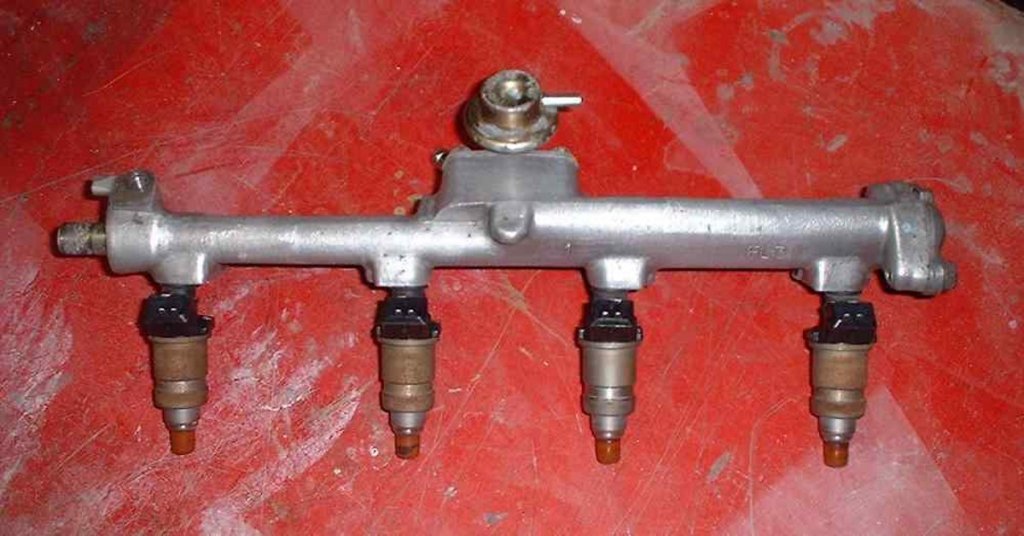
Fuel injectors are what eventually make the fuel travel into the cylinders. By design fuel injectors are meant to use the pressurized fuel from the pump with correct timing and perform atomization of the liquid into a fine mist.
But due to their complexity, they require perfect operating conditions to function correctly and even the slightest imperfections in fuel can cause deliverability issues. So if your car just cranks without turning over a fault with the injectors is highly probable.
When the fuel reaching the injectors is not properly filtered, it could lead to a blockage in the nozzle needle. A dirty fuel injector can then, restrict how much fuel goes into the cylinders and reduce the power a car needs to start.
There might also be the possibility that one or more fuel injectors are stuck close or do not function properly but it’s highly unlikely that all of them will go bad at the same time.
Dirt accumulation and clogging are more common and can occur on all of the nozzles quite evenly. Fuel injectors can collect dirt and particulates in various ways, so having them cleaned periodically by a trained mechanic is important as it will ensure they fire properly each time.
How To Check
Usually, the mechanic will inspect the fuel injectors using a vibration meter but listening to the pulse of the injectors. But since not everyone has one of those, instead you could use a long screwdriver that works just as well to gauge fuel injector pulses.
You need to press the metal end of the screwdriver against the fuel injector and place the other end close to your ear. To assess if the injectors are firing properly we need to listen for a rhythmic clicking noise when the vehicle is cranking.
If you get a consistent rhythmic noise from the injectors it means they are working fine. Check each fuel injector and make sure the clicks aren’t sporadic.
Bad Fuel Filter
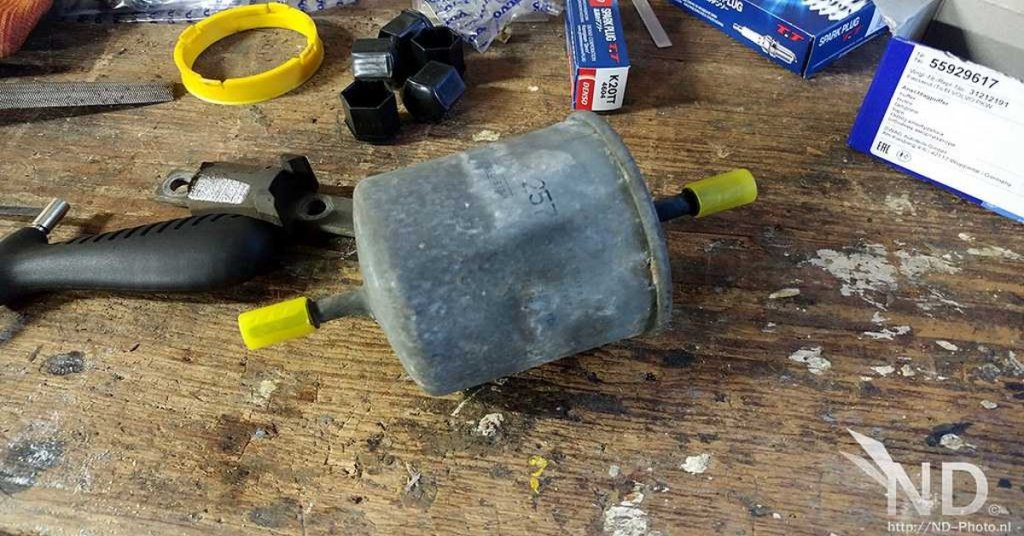
A clogged fuel filter can have much the same effect as a bad fuel pump which can create an overlapping factor if you have low fuel pressures.
The fuel sent by the fuel pump has to through the fuel filter to screen out dirt and contaminants before it enters the cylinder. This is an important step as the fuel being sent to the engine is unfiltered, containing tiny particulates and contaminants which can unnecessarily add to the wear of the moving components.
Fuel filter screens the particulates out to ensure circulation of clean without impeding the free movement of fuel. But if you have a fuel filter that has been clogged either by too much use or through stuck debris,
it can cause the fuel supply to the vehicle to be reduced resulting in the car not starting. Further, a clogged fuel filter can eventually also burn up the fuel pump due to the increased backpressure created by the lingering fuel.
Replacing the fuel filter every 15000-20000 miles on your car service should be able to avoid such a situation but if something has stuck inside the fuel filter, it can restrict the flow of pressurized fuel and prevent a sufficient amount from reaching the cylinders.
How To Check
Modern cars have fuel filters located inside the fuel tank, making them extremely hard to get to. And for a common person without proper equipment and knowledge, it is near impossible to get their hands on one to inspect or replace them.
However, you could still look for some of the signs of a bad fuel filter that you might have had when the vehicle was working to assess if you need a replacement. When the fuel filter is clogged it can cause issues like engine misfires, reduced gas mileage, and poor acceleration.
It is not much to work with but you need not worry about it if your fuel pressure is in good condition since that’s all we need from the filter to start the vehicle.
Malfunctioning Throttle Position Sensor
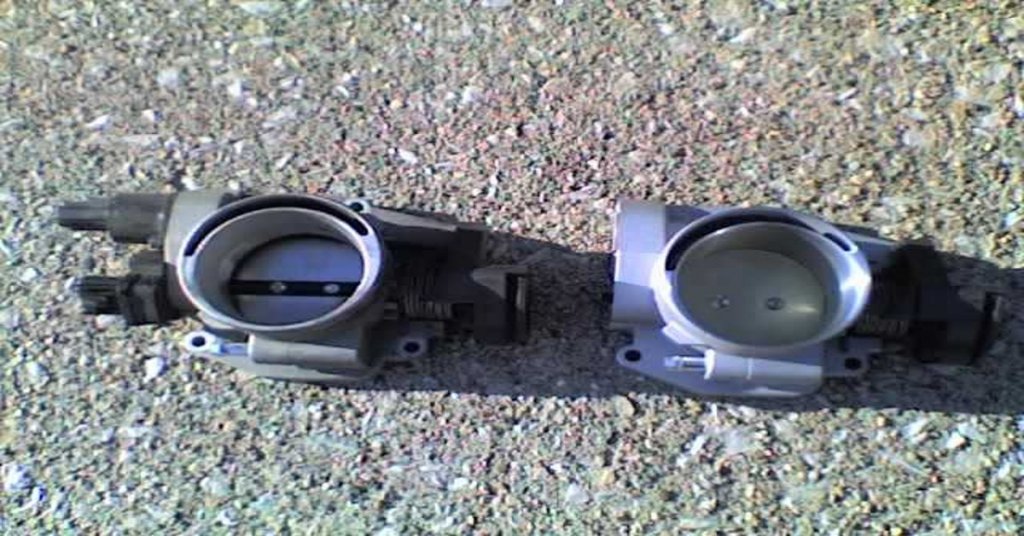
Certain sensors in your car though not directly a part of the fuel system can still have an effect on the amount of fuel that gets in.
These sensors can create a condition called “no injector pulse” which means the fuel injectors cannot fire fuel or the fuel system has been disabled. Which again consequently prevents sufficient fuel from being pumped into the engine.
The throttle position sensor monitors how the throttle butterfly valve is oriented in the system to measure the amount of air coming in. It uses a resistive wire element to read how far the throttle is engaged and sends voltage signals to the ECU.
Based on the airflow data it helps the engine control unit determine the correct fuel to air ratio and acts as an adjunct to other measures of fuel determining factors such as temperature, MAF sensor, engine RPM, etc.
When the throttle position sensor goes bad it can sometimes send a wrong signal to the engine control unit interpreting,
the throttle as wide open which puts the vehicle in flood mode or a no fuel injector pulse condition preventing the fuel injectors from firing. In such a case, the engine does not get any fuel injection which again produces long cranks but no start.
In addition to fuel problems, a bad throttle position sensor can also restrict the airflow into the engine which can create a similar problem. As the airflow is reduced, fuel injected into the system will also be proportionately forced back, causing the vehicle to stall abruptly.
How To Check
Normally testing the throttle position sensor requires you to use a multimeter to measure the voltage changes when the throttle position changes occur. And this can actually help you find the error much easier if you suspect a bad throttle position sensor.
But if you do not have a testing device, one easy way you could check if it is the TPS that is causing the crank but no start condition is by taking the sensor out of the equation since all we need to start the vehicle is to bypass the no injector pulse. So just crank the engine with the TPS unplugged and if the car starts, you will know it was a bad throttle position sensor.
Air
Oxygen controls the amount of fuel the engine will burn. Ideally, for every one unit of fuel, an engine needs 14 equivalent units of oxygen, creating the stoichiometric mixture of 14:1.
The engine’s air intake system helps supply the necessary oxygen into the engine while filtering various particulates and calculating the amount actually going in. The volume and density of air are calculated through an airflow sensor.
Your car may either be fitted with a MAP (manifold absolute pressure) sensor or have a MAF (mass air flow) sensor, though most newer cars come equipped with the MAF sensor.
The air coming in through the intake is measured by one of these sensors which allows the ECU to determine how much fuel needs to be injected.
Clogged Air Filter
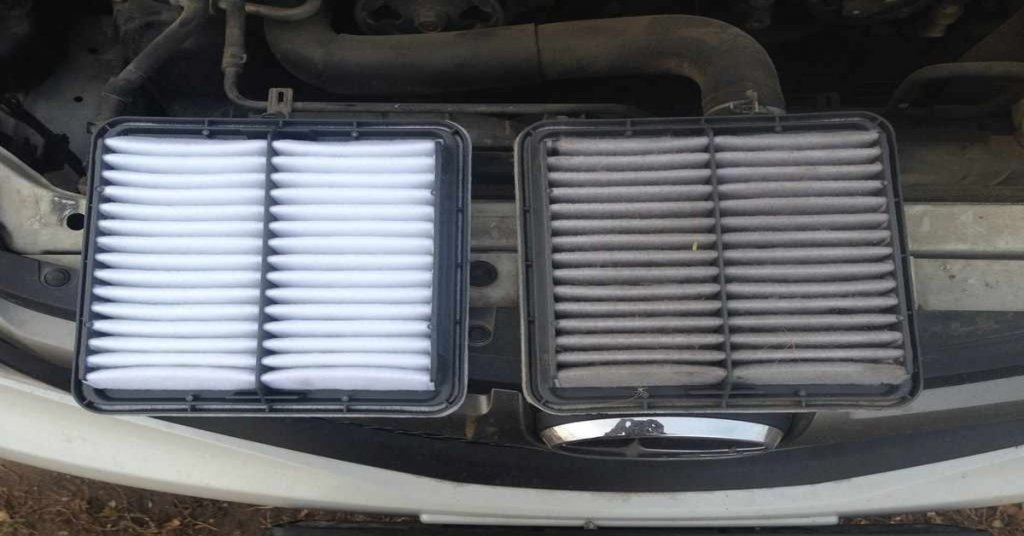
The amount of air flowing in, directly affects how much fuel goes into the engine. If there is a restriction in airflow, the ECU will lower the amount of fuel entering the system hence, lowering the power. The air filter in the car ensures the air flowing into the engine is clean and contaminant-free. It catches any dust or dirt that the air may bring when it comes through.
Though over time as the air filter constantly attracts dust and particulates it is normal for it to get dirty. It can sometimes even get blocked by a bigger piece of debris and severely cut the flow of air into the system.
This leads the engine computer to adjust the fuel ratios accordingly which essentially results in low power for your engine to start. The engine will crank indefinitely but won’t start over due to insufficient power.
How To Check
Checking for a dirty air filter is pretty straightforward. The air filter is usually attached to the intake tubing which can be found under the hood. You can access the air filter and look for the dirt and debris trapped inside the filter.
If there is debris blocking the airflow you may clean it out but if the air filter is severely clogged and dirty or is just old, it’s best to replace it with a new one. Air filters can be good for 12000-1500 miles but they can sometimes abruptly find an obstruction that you might not be aware of.
Malfunctioning MAF Sensor
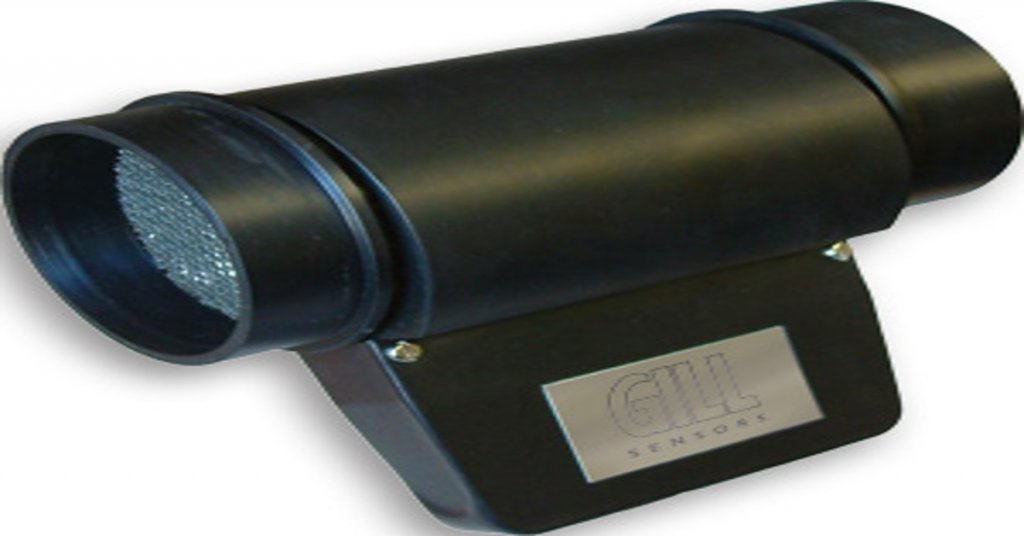
The air coming through the air filter has to go through a device called the mass airflow sensor. This sensor calculates the total amount of air coming into the engine and sends the information to the ECU for adjusting fuel injection.
If the MAF sensor fails to send an accurate signal it could lead to miscalculations in the fuel ratios. It can either result in the vehicle running too rich or too lean. Though most likely ca car that cranks but doesn’t start is a result of a lack of cranking power created by a lean mix.
One other way the MAF sensor can contribute towards a crank but no start condition is by fouling the spark plugs. If the engine is running rich due to an inaccurately high flow of air it could lead to unburnt fuel escaping the system and carbon soot building up on spark plugs. This can weaken the electrodes hence, the spark.
How To Check
To see how far off the signals from the bad MAF sensor are, you would need to do a multimeter test. Though in this case, you could just try unplugging it. Sometimes a disconnecting a the sensor allows the vehicle to turn over with sufficient air.
When the MAF sensor is disconnected, the ECU would shift to use an estimated amount that it thinks would be right. So, the car should start up after disconnecting the sensor, if there is an obstruction in the air supply.
Locate the MAF sensor which is usually near the intake tubing and unplug the device. Now try and start the car. If it does, you would know the sensor was bad.
Spark
The next thing your car needs is, spark. The ignition system in a vehicle is used to ignite the fuel mixture so the fuel can begin to combust. But when you turn the key in the ignition it is more than just a spark that sets the fuel to burn. Ignition systems have been developed over decades and are quite complex. Although one of the major reasons for indefinite cranking is losing spark capacity which can be attributed to either a bad ignition coil or a weak spark plug.
Worn Spark Plugs
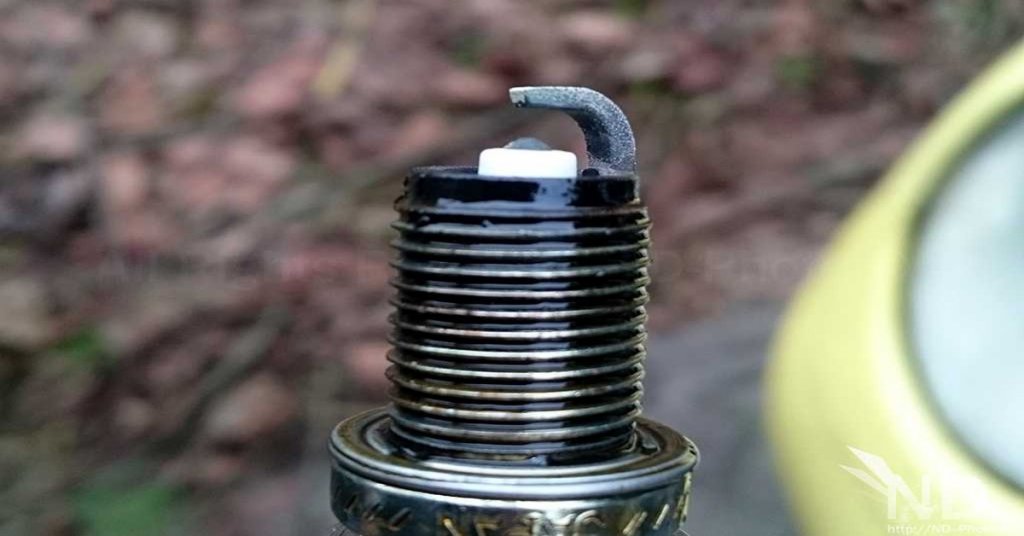
For a proper ignition of the fuel, a powerful spark is key. Spark plugs undertake the actual ignition process by igniting the fuel mixture.
They are supplied with an extremely high voltage from the ignition system that is carried through the wires down to the connector terminal
which then travels to the central electrode to jump the gap between the power and the grounding electrode, producing the spark that ignites the fuel mixture.
Assuming the current flowing through the ignition system is unhindered, spark plugs that have worn out will not be able to jump the gap between the terminals like they used and create a weaker spark that may crank the engine but not be enough to start the car over.
Spark plugs are quite durable and require replacement every 30000-50000 miles. Though iridium or platinum-tipped spark plugs can go as long as 150,000 miles in between replacements.
How To Check
To check whether spark plugs are working correctly or not you could either do a visual inspection or test for the sparking lights using jumping cables.
A visual inspection might not provide a clear answer but it could be helpful when the spark plugs are old and have undergone some surface changes. so it’s still worth looking into.
What you need to look for while checking spark plugs visually is the severity of wear and discoloration around the area of its tip. Generally, a worn, greyish color is normal when the center electrode wears out. Though if the plug looks excessively worn and has carbon buildup on it, it could be hampering the spark performance.
The other way you could check if the spark plugs are working right is by using a jumper cable and a spare spark plug. Take out one of the spark plug wires and attach it to the spare spark plug. Then connect one end of the jumper cable to the spark plug and the other end to the negative terminal of the battery.
Now, crank the engine over. If you do not see any sparks coming out of the spark plug, it would mean the ignition system is not working and the vehicle is not getting a powerful enough spark.
Normally if the spark plugs are fine they should fire a consistent stream of light when the engine is cranking.
Bad Ignition Coils Or Coil Pack
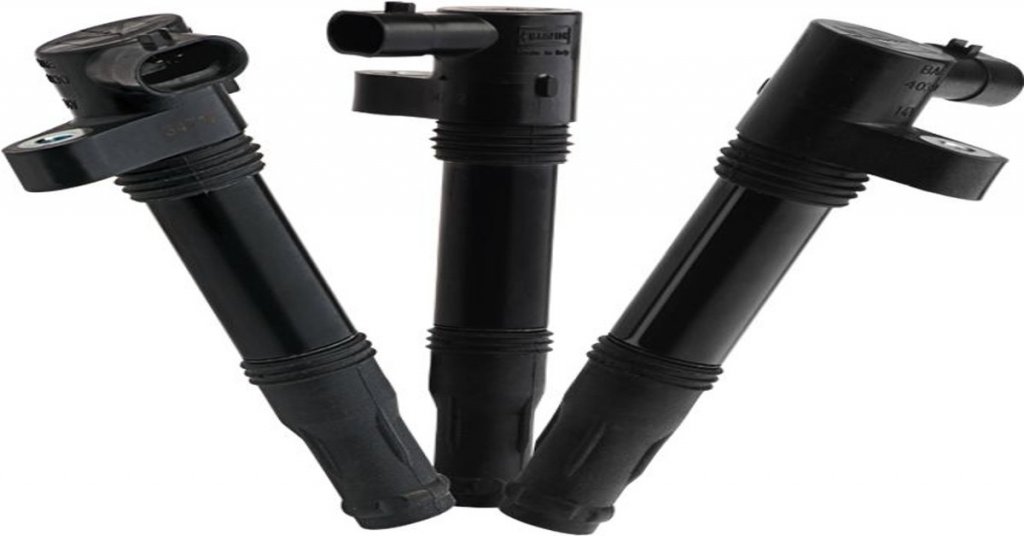
The heart of a car’s ignition system is the ignition coil. Each cylinder has its own coil that transfers the energy from the battery to the spark plugs in order to ignite the fuel mixture. It is an induction coil that acts as a mini transformer to the battery’s low voltage current and turns it into the several thousand voltages that would be needed for a powerful spark and to jump the gap.
When the car is turned in the ignition, a low voltage current from the battery passes the winding of the ignition coil which are then amplified to deliver the required energy the spark plugs will need to jump the gap.
If the ignition coil fails to transmit sufficient energy through, it will again, create a condition of weak spark. Usually, when the ignition coil pack goes bad,
you will notice an engine misfire prior to the no start condition but sometimes it may fail without any specific reasons or warning sign. However, in the case of separate ignition coils, you may be prevented from turning over only if two or more go bad.
How To Check
With age, it is normal for the ignition coil to lose volt capacity. To examine, by how much the capacity of the ignition coil has reduced, you would have to do a multimeter test. A multimeter can show if the voltage output from the coils is optimal or not. However, if you do not have a multimeter, you can use this method to see if your ignition coils are working or not.
Firstly you need to visually inspect the plastic housing for crack and chips. If the body of the coil pack is damaged or even singed, it could cause the ignition coils to arc and short the neighboring components. So make sure the ignition coil itself is fine. If it appears to be damaged, you need to buy a new one.
Now to check if the ignition coils are actually working and transferring the energy to the spark plugs, you would need a set of jumper cables, a couple of screwdrivers, and someone to crank the engine.
First, Separate the spark plugs from the ignition coil and place one screwdriver on one of the three pins inside. Then disconnect the positive terminal of the battery and hold the screwdriver, clamped with the jumper cable.
Next, you need someone to crank the engine. When the engine is cranking, bring the other screwdriver near the metal end of the attached screwdriver and you should see a consistent stream of spark.
Unfortunately, this method cannot tell you the voltage with which the ignition coil is transferring the power to spark plugs. In order to do that you would need to conduct a multimeter test.
Compression
As the air-fuel mixture comes through the intake it needs to be compressed within the cylinder. The process of compression exerts a high pressure and forces the fuel mixture to confine under a very small area, squeezing together all the molecules within.
Compression simply means how much pressure there is when a piston depresses or compresses in the cylinder. Generally, you would want your compression to be on the higher side of around 150 PSI. The higher the compression, the better it is for your engine’s health.
The best way to see if your car has good compression is by performing a compression test as the causes for such an issue can be quite complicated and fixing them is almost always not a DIY job.
To conduct a compression test you would need a compression test kit which you can either buy online or rent from your local mechanic.
A compression test is pretty straightforward, you need to simply install the pressure gauge where your spark plugs are placed and crank the engine four times. Make sure to floor the throttle to avoid fuel squirting out of the cylinders.
Do this per cylinder and note down the pressure. Even on an old engine, pressure readings are usually above 100 PSI so make sure it is not below 90 PSI. And If it is lower than that in any of the cylinders here’s why that might be.
Worn Piston Rings
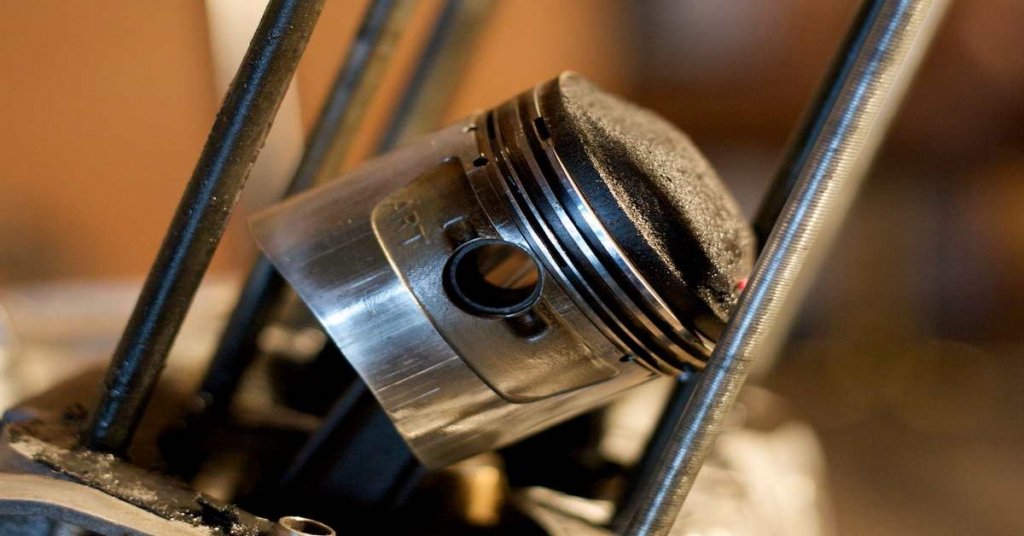
Attached to the outer diameter of the piston, piston rings serve few crucial functions in the combustion process. The most important of them being maintaining compression by sealing the gap between the piston and the cylinder wall.
They seal the cylinder valves so fuel mixture gas can not escape into the opening between the cylinder and the piston. If the combustion gas leaks, it will result in reduced power from the engine.
The piston rings can develop cracks and chips due to a number of reasons namely, improper installation, wrong dimensions, off combustion of the fuel/air mixture, abrasives from dirty engine oil, and even leftover particles from reconditioning the engine.
Apart from maintaining compression pressure, the piston rings are also essential for lubricating the piston, transferring heat, and preventing the piston from knocking against the cylinder wall.
So If the piston rings wear out they can create a host of issues with the combustion process and lead to poor engine performance.
Signs you have worn piston rings
- Poor Vehicle Performance
- Poor Acceleration
- Excess Exhaust Smoke
- Excess Oil Consumption
Blown Headgasket
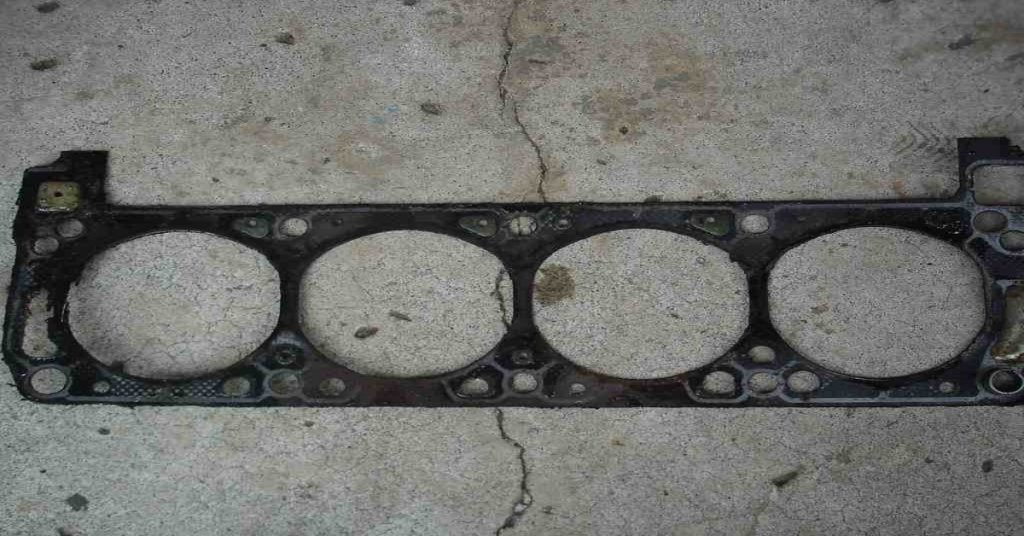
Headgaskets serve the most critical function in ensuring there is proper compression of the fuel mixture. They seal the gap between the engine block and cylinder head. If the head gasket somehow develops a leak and the seal is not secured,
it could result in lowered compression in the cylinders. Additionally, the head gasket also makes sure the engine oil and coolant are well contained in the engine which can create numerous other issues if routed into the cylinders.
One of the major reasons for head gasket damage is heat. When there isn’t enough coolant in the engine to dissipate heat from the blocks and heads, the high temperatures cause expansion of the head gasket which can eventually lead to a blown head gasket.
There can be however few other reasons such as detonation and mechanical damage that could also result in a damaged head gasket.
Signs you have blown head gasket
- White Smoke From The Tailpipe.
- Bubbling In Coolant Reservoir.
- Coolant Loss With No Leaks.
- Milky White Engine Oil.
- Engine Overheating
Timing
So if you checked off a spark, fuel, air, and compression, the last thing that could interrupt the proper ignition and prevent your car from turning over is timing.
Ignition timing is measured in angle, it is the crankshaft degree before TDC (Top Dead Center) where the ignition of fuel mixture will occur at the end of each compression stroke. If the ignition timing is advanced that is,
it ignites the fuel mixture too soon, it would collide with the piston creating an explosion known as detonation which would result in a reduction in power from the combustion. So you need to make sure the timing of ignition is absolutely perfect to obtain the most power out of every combustion reaction.
Loose Timing Belt
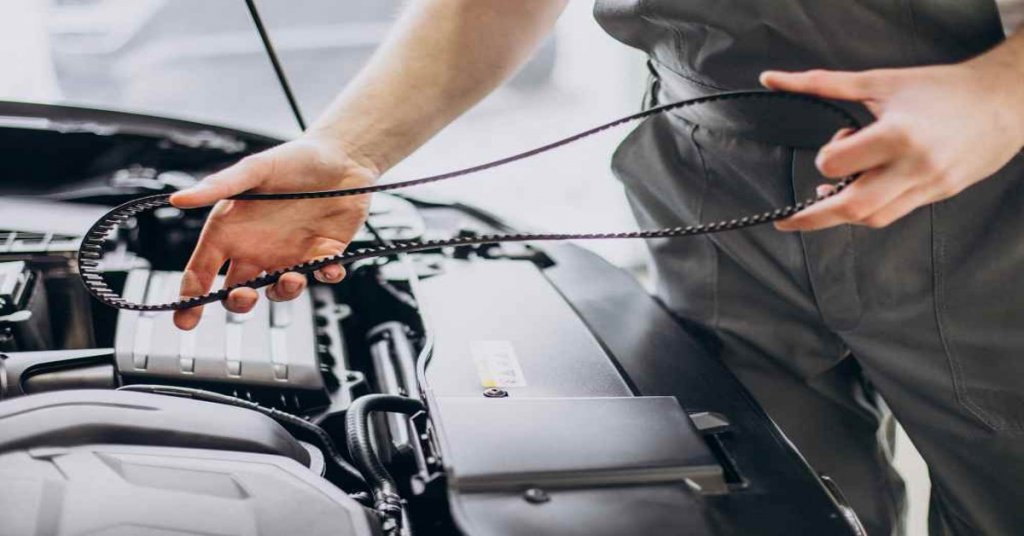
While more and more manufacturers are switching to the timing chain for their engines, it is still quite expensive for lower-end models and there are many cars that come equipped with a timing belt.
If your car has a timing chain it probably won’t have the issue of being loose though it could have other problems which are probably best left to the mechanic to deal with. Also, a chain malfunction is a rare scenario. So,
if you have a good old rubber belt it could most likely be the culprit for a crank but no start situation especially when fuel, air, spark, compression all check out fine.
A loose timing belt is one of the most common causes for starting issues of older cars, it could even prove to be detrimental to the engine from causing wrong ignition timing.
The timing belt is used to move the crankshaft and camshaft in correct formation and ensures each cylinder fires at the right time. If there is a problem with the timing belt it can lead to the camshaft and crankshaft being out of sync which can progressively worsen the timing.
In order for the engine to work properly, the timing belt must it be attached to the camshaft gear firmly and rotate smoothly without slippage or hesitation.
If the timing belt is loose, it could jump teeth on the camshaft gear which can lead to misalignment between the camshaft and crankshaft.
A timing belt that is torn or is excessively worn out can also result in poor compression which can cause your car to turn over rapidly but not start as the valves will not be able to close properly or simply stay open.
How To Check
The timing belt is located under the timing cover usually found in front of the engine bay.
You can remove the cover to check the tension on the belt. But first, make sure the timing belt is in proper condition to run. It shouldn’t have any tears or cracks and shouldn’t be frayed. In which case you will need a replacement and installation.
Next, once identified, you can check the timing belt simply by touching the ends and measuring its tightness. If the belt feels loose when pressed, you would need to get it corrected by a mechanic. You can do the work yourself but the procedure can differ from a specific model and would require some time and effort.
Misaligned Crankshaft Pulley
Crankshaft pulley attaches the vehicle to the crankshaft. The pulley harnesses the rotation power of the engine and transfers energy to other components. However, in order for it to be working correctly, it needs to be properly aligned in the system otherwise the crankshaft and camshaft will be out of sync.
How To Check
Generally, the crankshaft pulley is located at the bottom front part of the vehicle, left from the driver’s seat. It can be accessed from the front side of the wheel where you may find it covered by a plastic casing of sorts.
But upon removing the cover, seeing if the crankshaft pulley is aligned properly or not is quite easy and somewhat easy to align as well.
You can look up on the internet where and how you could access the pulley for your specific model and check to see if it is aligned with the marks on the timing cover from underneath the vehicle.
Next, if you see that the pulley is misaligned you could use a socket and a wrench to spin it and bring it into alignment. Spinning it over won’t open it so don’t worry and rotate it until it is aligned with the marks on the timing cover.
Misaligned Camshaft Gear
The operational function of the camshaft gears is to keep the camshaft rotating in time with other components. If the camshaft gears are slipping on the belt then the engine will be out of time and won’t be able to start.
How To Check
The gear wheel of the camshaft should have a mark that is on the upper side for the vehicle to start. If you see your camshaft gear is out of alignment, you could rotate it to be on the mark.
First, you would need to loosen the belt tensioner and remove the timing belt. Then using a wrench, carefully align the gear to be up on the mark. Once the mark is on top make sure it also aligns nicely with the marks on the side of the belt cover.
Malfunctioning Camshaft Position Sensor
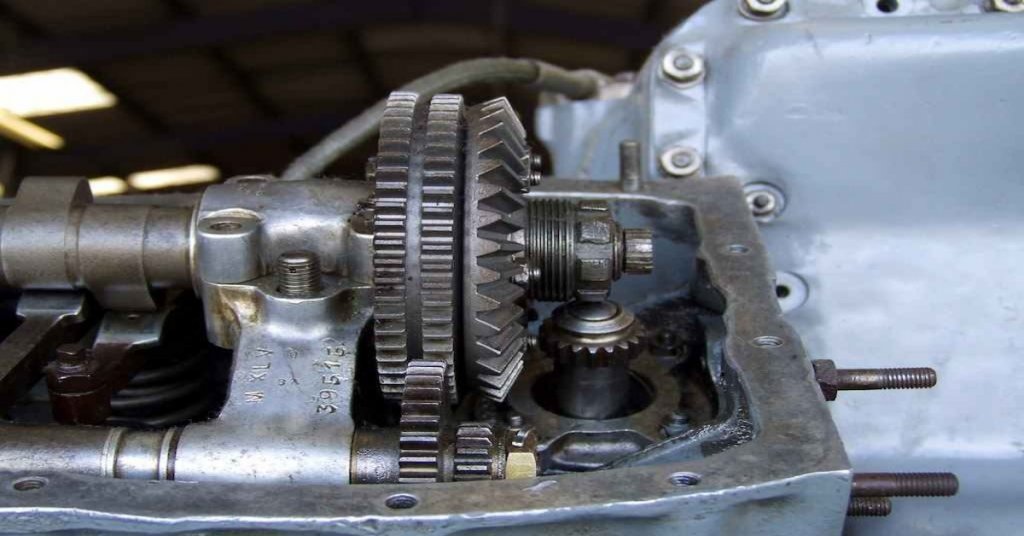
Even if you had the camshaft gear aligned, it wouldn’t be totally good if the sensor measuring its movements sends an inaccurate read. Similar to the TPS, the camshaft position sensor, in some vehicles, can also create a no-injector pulse. It signals an inaccurate reading which causes the ECU to prevent fuel injection into the cylinders.
A bad camshaft position sensor essentially disables the fuel system rendering the injectors with no pulse which here, translates quite appropriately to the engine not having any.
However, one other way it can affect the engine is by causing miscalculations in the ignition timing.
The role of the camshaft position sensor is to read the camshaft rotations and relay the information regarding the position of the crankshaft drive to the ECU.
This helps the engine control unit in cylinder identification and determining the ignition point. By knowing which cylinder is approaching the top dead center, the Engine control module can adjust ignition timings for a smooth combustion process.
How To Check
Though the camshaft sensor also requires a multimeter to accurately check if the voltage coming from the sensor is correct, in the case of checking whether it is having an effect on the fuel system or not you may just unplug the sensor to see if the car works.
By unplugging the device, the engine computer goes into default mode where it uses certain preset parameters to calculate the fuel mixture which can work to start the car. If the camshaft sensor is what preventing your car to start, this trick might just work for you.
Though to if check the camshaft sensor is accurately monitoring the position of the crankshaft driver, you will need to do a resistance test.
Malfunctioning Crankshaft Position Sensor
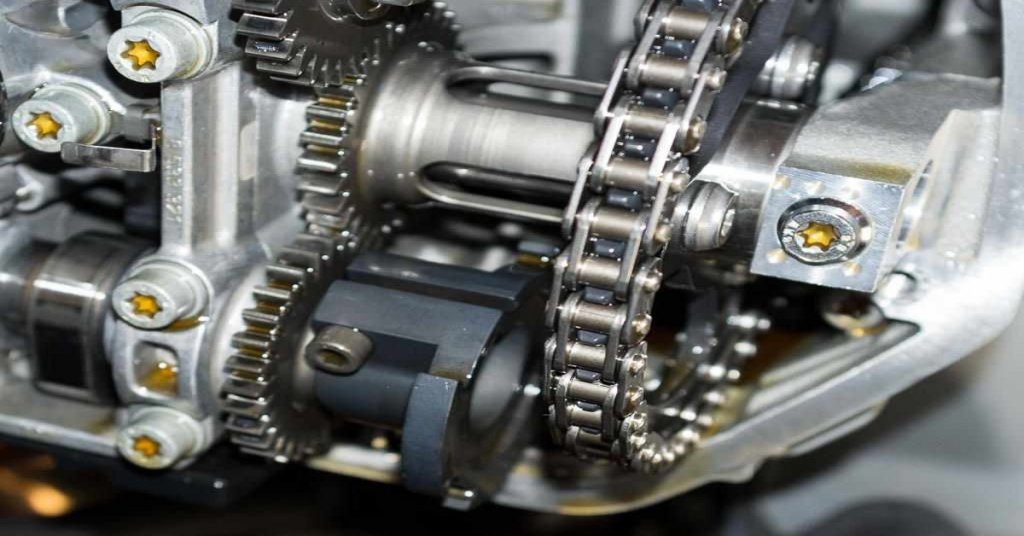
Another important aspect of ignition timing is the crankshaft position sensor. Apart from the properly aligned components, the ignition system requires sensory data from the engine control unit to precisely calculate the time of igniting the fuel mixture.
The crankshaft position sensor helps the engine computer determine the orientation and rotation speed of the crankshaft. The ECU uses this information to precisely calculate fuel injection timing along with ignition timing. It helps the engine understand the position of moving crankshaft and adjust the timings continually and accordingly.
How To Check
One easy way you could check if the crankshaft position sensor is working is by observing the tachometer. If you get engine revs it should generally indicate that the device is working fine.
Though on some cars the tachometer may not work if the engine doesn’t crank past a certain speed. In which case it may not be ideal to rule out the crankshaft position sensor as the cause.
The better way to examine the crankshaft position sensor is by using a multimeter. Your crankshaft position sensor is usually at the bottom of the engine, behind the harmonic balancer. Though it can slightly vary among different models.
Other Possible Causes
Apart from the big five elements, your car needs one initial kick start to set the entire combustion procedure in motion. And this is usually done by the starter motor in conjunction with the battery. Before the combustion process even begins these may prevent your car from turning over.
Failing Battery
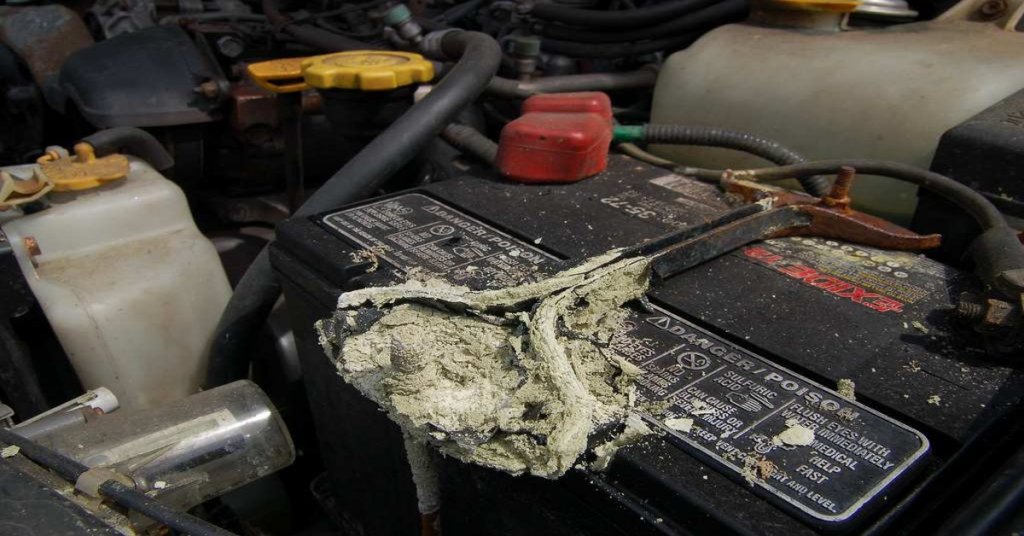
Staring problems should not come as a surprise if your battery is low. The battery is an important component in the starting process. It delivers the initial zap to the ignition coil to create the spark as well as the power for the starter motor to work.
One of the most common occurrences for a low battery is forgetting to switch off the electrical components when turning off the vehicle. And Though it’s hard to quantify, a 10-hour drain should be enough to strip your battery off its juice.
Further, car batteries can fall short of delivering a sufficient amount of charge due to a few different reasons. You may either have corroded terminals, a parasitic drain, a loose ground connection, or just a battery that’s nearing the end of its service run.
Starter
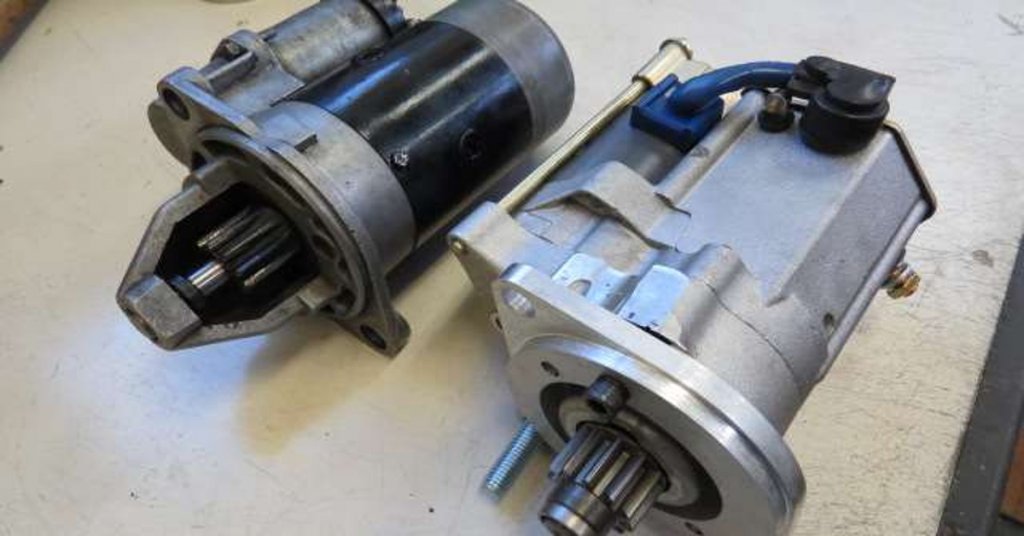
Stater issues usually don’t cause cranking problems. In fact, it’s more likely that you will have a no-crank condition when the starter goes bad.
But in rare cases when the electric motor inside the starter weakens, it can create a crank but no start condition. When the starter motor cannot spin the flywheel up to a certain speed, the engine may not be able to turn over despite having fuel, air, spark, compression, and timing.
However, there’s is one easy way you can check if it is the starter. You can simply hit the starter motor a few times on the metal body with a stick and try to start the car. In most cases this works like a charm. Though you should take it as a clear sign that you need a starter replacement.
Conclusion
As you may note, there are myriads of factors at play in starting a combustion reaction. It is one of the most precision-controlled tasks that your car seemingly takes on with ease over and over again.
By identifying and analyzing each of these factors, separately, and diagnosing with the correct methods, in most cases, you can be able to start a car that cranks but doesn’t turn over.
Hope you found this DIY diagnosis guide on one of the most common no start condition helpful. And if you have any questions, queries, or suggestions, do comment down below.



